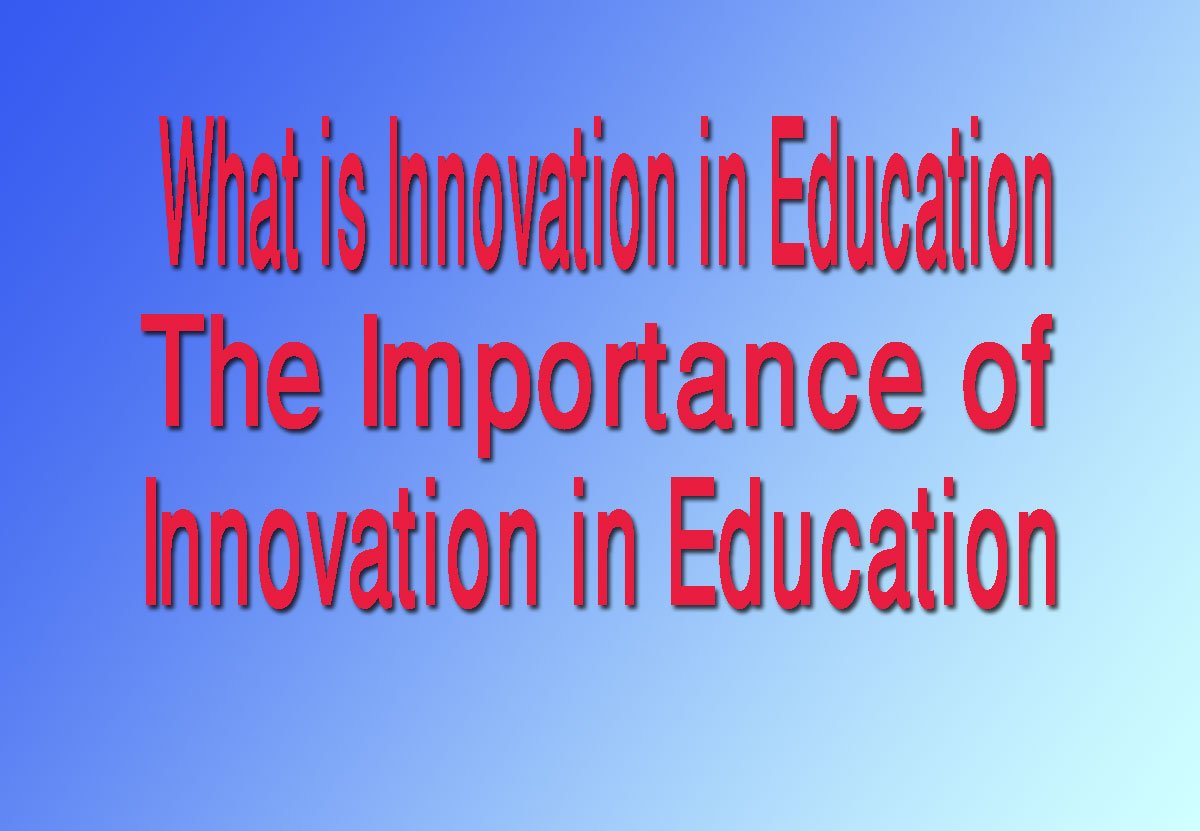The Importance of Innovation in Education
Progressively, innovation in education at school, Elementary or High level, is more than just a power word. It is very fast becoming a popular method or way of learning and teaching for both students or children and teachers or educators consequently. Innovation in education encourages students and teachers to research an un-cover thinking, investigate, discover then explore, and use all the tools to uncover something new way, new through innovation or path and transformation.
Innovation involves a new way or different way of approaching and solving problems. It also improves one’s education because it compels students to solve real or complex problems at a higher level of understanding mean thinking. Innovation does not always imply technology application or the generation of new inventions, though these factors can contribute to innovation.
Innovation involves a new or uncovered way of thinking, which helps the students or thinker to develop their creative thinking and problem-solving abilities or skills.
The importance of Innovation in education can be a rather abstract concept and can mean different things to different people. However, there are very real and visible benefits of innovation in education.
What is Innovation in Education?
Normally, innovation require the development or inform to a new products, procedural system, or business strategies for the good well of a company or any thinking. Also, innovation in education as well aims at bringing about the positive progress, but all these changes will considerably benefit a school, classroom, college, or even an institution’s training time and learning practice. Teachers, coordinators and researchers approach this method in a variety of ways, both in large area or a little field.
Challenge students by giving them a problem that is both authentic and interesting:
There is no fixed project for every student. This means that a project has to be more flexible for students to fit it into their own interests. It also means that teachers have to know about their students’ interests or wants.
Give students the basics but keep it short:
You will must be introducing the students some basic information or concept and knowledge to get started on their projects. However, the amount of information that the class will need will be less than what you would expect from students. You can divide into several parts in this information into organized blocks of 5 to 10 minutes and deliver these in a mini-lesson at the start of the class.
Encourage students to research independently:
If the project design or concept is clear and orderly, students will get the vast majority of the information they need from their own independent research. This research can draw or collection from Wikipedia, internet message boards, programming language documentation, sample code, and so on.
Build complex skills in students:
You can encourage them to use some complex tools to complete their projects. Some of them are Tickle, Tynker, Scratch, and so on. Both teachers or researcher and students need to become familiar with these tools to use them regularly.
Check that students have understood the concepts:
In a classroom pointing on highly individualized projects, teachers or coordinator need to monitor what students are struggling with their project. Effective or better learning occurs when students struggle with a problem and finally, they are able to find the solution to. If they cross over into frustration or confusion, they are likely to give up the project or thinking. Teachers or coordinator should handle careful track of what students know and what they should learn in order to successfully solve their projects.
Confirm that students find innovative uses of all objects:
Most of the people to see only a single use for an object. It’s called Functional Fixedness. Students can be taught to see beyond the unknown and unspoken theme. This will help students flex their creative muscles and think beyond the standard uses of every day, all objects or thoughts.
Confirm that students know what they still need to learn:
In order to innovate and solve issues effectively, the students need to understand not only what they already gathered knowledge or information and what they still need to learn. Teachers or coordinator should build their initiatives so that students or learner can list the objects they understand about their project, as well as the things they need to understand better.
Do not grade or marking students on innovation and creativity:
Grades work done really well when there is fixed correct answer for a specific problem. For projects work that highlights innovation and creativity, there is no single answer here. If you want students to own a problem and find an actually original solution for it, you cannot motivate them with a grade or marking system.
Why is Innovation in Education important, and what is Innovative Teaching? Summarization
Educational Innovation is extensive due to the fact the young minds or students age shaped by the academical system in these times will lead the charge for development tomorrow.
The foundation of creative education is novel teaching concepts that inspire learning, thinking, inquiry or investigate, exploration, and taking a risk.
For to get better results, some instructors or teachers or coordinator have combined technology with textbook study.
Here we can say, when introducing a picture book and a storybook for history lectures in a class-room, a pupil is more likely to remember a subject when demonstrated practically rather than verbally or orally.
The creative schools and their teaching techniques, the teacher or coordinator might start by separating students into many groups and guiding them to find innovative solutions for the given problem.
This way students thinking process is a method for identifying problems, gathering data, generating potential solutions, refining ideas, and testing their solutions. Discovery, Interpretation, Ideation, Experimentation, and Evolution are the 5 most important steps of this process.
Innovative Education, Creativity, Practical And Social Implications
Innovation In Primary Education


Comments are closed.